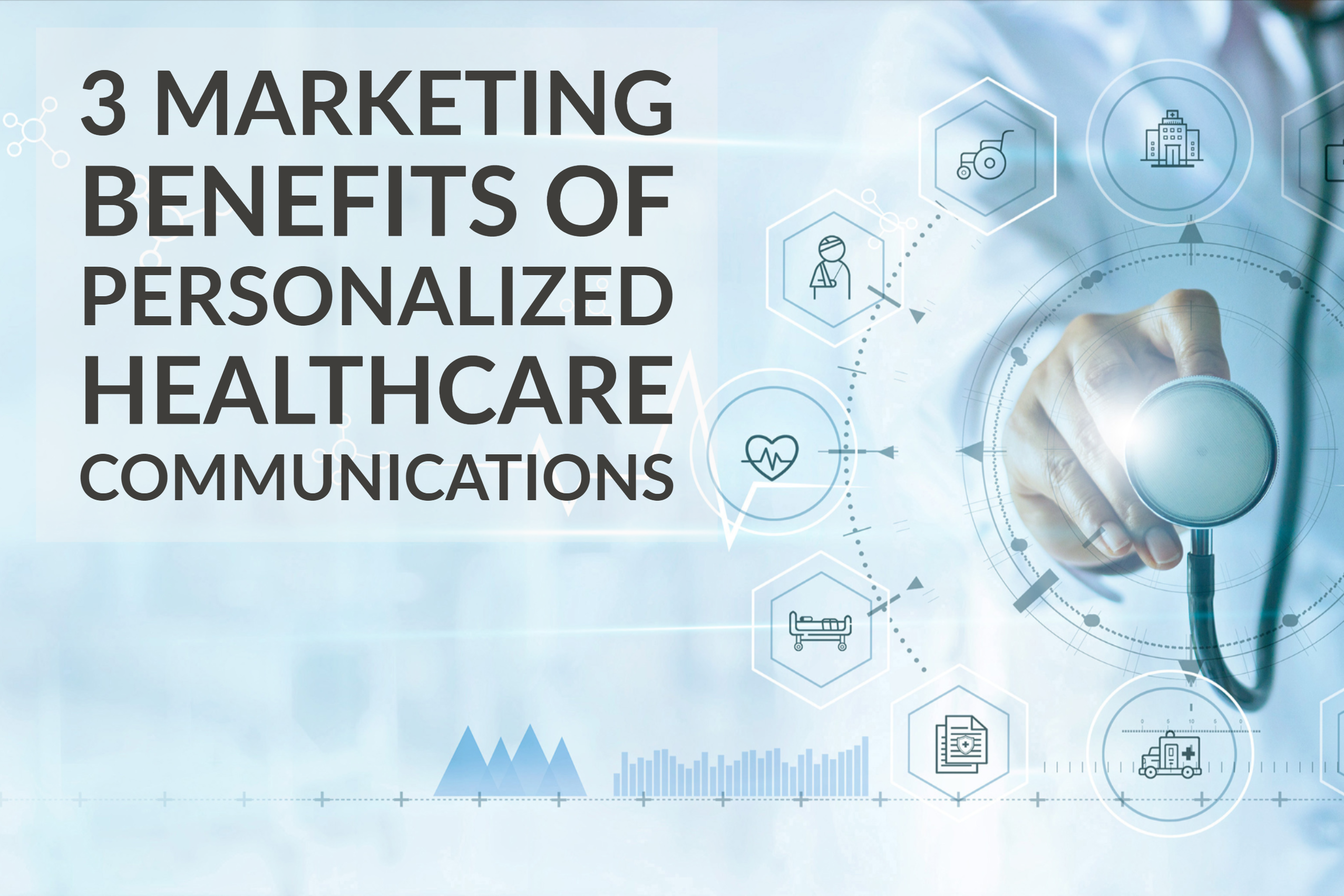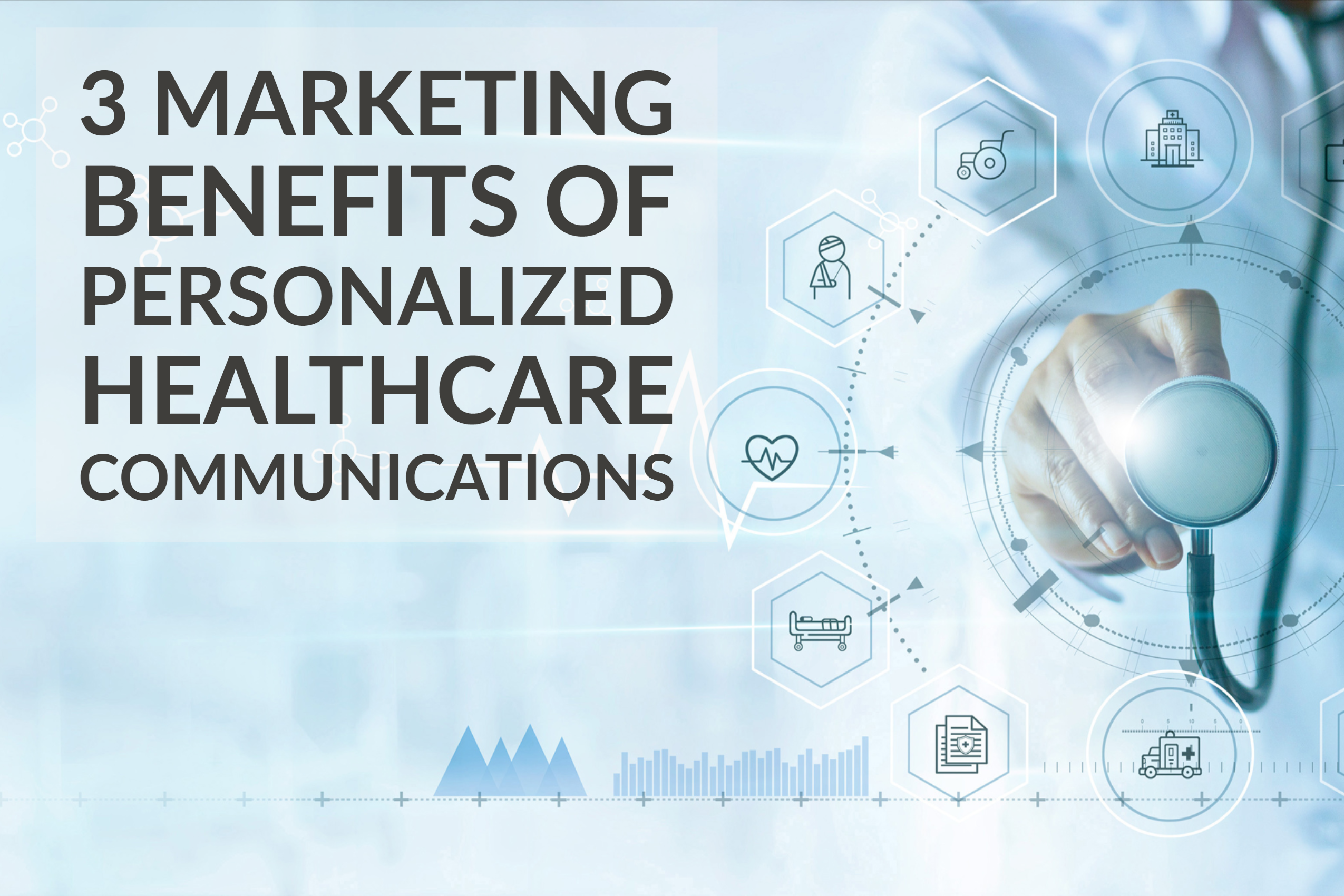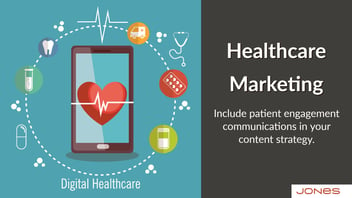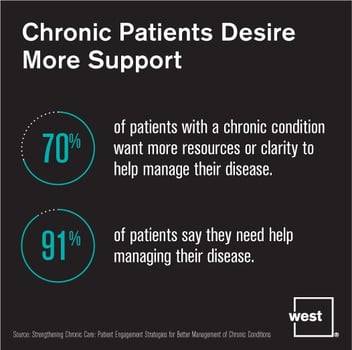3 Marketing Benefits of Personalized Healthcare Communications

Healthcare marketing has traditionally been dominated by two approaches: awareness campaigns on billboards, print media and broadcast; and general educational material, first as magazines, and now in electronic newsletters, blogs and websites. All of it is focused on a broad audience.
But we have entered an age in which personalization is becoming more effective and more expected in nearly every aspect of life, from the “recommended” products Amazon shows us based on past shopping history to social media algorithms that bring us content based on what we have searched, read or commented on.
Healthcare also has the opportunity to personalize its communications with patients in ways that benefit both the patient and the organization. Marketing should be at the lead in spearheading these efforts.
Here’s why.
Personalized healthcare communications increase patient satisfaction.
Through years of working West and other healthcare IT, healthcare technology, and healthcare management businesses, we have seen how important communication has become in generating patient satisfaction.
Why is patient satisfaction so important? Because nearly 9 in 10 Americans say they would consider switching healthcare providers if they are not completely satisfied. And some of the key ways patients say providers can improve satisfaction come back to communication:
-
49 percent say they want to know treatment costs in advance
-
38 percent want more clarity on available services
-
35 percent of patients who need assistance managing chronic conditions want a better understanding of how to change unhealthy behaviors
-
33 percent of patients who need assistance managing chronic conditions want a more individualized treatment plan
-
31 percent of patients who need assistance managing chronic conditions want tips and tools to better manage their health
In other words, they want providers to communicate.
That communication could be in the form of email newsletters, texted reminders, specialized social media groups — the more personalized, the better.
Why is this a benefit for marketing? Because word of mouth still matters, especially when people are choosing healthcare providers. When patients are satisfied with their providers, not only are they more likely to stick with them, but they tell others. That means less patient/customer turnover and more referrals.
Even though these kinds of communications may not seem like marketing content, they serve a purpose of educating consumers and creating brand advocates.
Get more specific tips on improving patient satisfaction here: How Healthcare Marketers Can Improve Patient Satisfaction.
Personalized healthcare communications can improve revenues and the bottom line.
While healthcare is an industry that, by nature, is focused on the health of its patients, it is still an industry that is tasked with making a profit (or, in the case of non-profit entities, with maximizing the impact of investments on communities). That means that marketers still need to look for ways to drive revenue and improve the entity’s bottom line.
One way personalized communications can do so is by engaging patients to do these things:
-
Keep appointments.
-
Pay bills on time.
-
Take advantage of insurance-covered services.
Missed appointments are a drain on resources, leaving provider time unfilled (and unbilled) and resulting in costs to reschedule. Personalized communications can be as simple as a reminder text or voice message with the time, date, location and reason for the appointment. Prompting patients to keep their scheduled appointments also has a side benefit — as do most personalized healthcare communications — of improving patient outcomes by ensuring they are getting the care they need.
Obviously, unpaid bills are also a concern for a healthcare organization’s bottom line. Automated, personalized communications can also be used to remind patients of outstanding bills or ways of setting up payment plans.
Finally, rather than relying strictly on new patients as a means of increasing revenue, healthcare providers may be able to increase their revenue stream from existing patients by letting them know about the screenings and procedures they can access at low or no cost thanks to their insurance coverage. Again, keeping patients informed can also help them stay healthier by encouraging screenings or preventative procedures that catch problems early.
Learn more: How Patient Engagement Communication Improves Healthcare Revenues.
When marketers highlight the benefits of personalized healthcare communications, they are speaking the CEO’s language.
As marketers, we have our own language of success, encompassed in acronyms like CTR and concepts like the sales funnel. We track metrics that have great meaning to us: blog readership, social media engagement, landing page conversion rates, and total website traffic, to name just a few.
But outside the marketing department, we need to adjust our measures of success, especially if we want to gain buy-in from the executive suite for our newest channel or campaign. We need to speak the CEO’s language.
In healthcare three things we need to talk about include patient satisfaction, patient outcomes, and revenue.
Patient satisfaction is not just the job of those who have direct contact with patients. As marketers, we can put programs into place, such as the ones discussed above, that increase patient satisfaction. That means patients are more likely to stick around and to refer others to the organization. And that means reduced costs for attracting new patients.
Patient outcomes are very important to the CEO, because they are a key measure of the quality of care provided by the healthcare organization or business. They are also increasingly tracked, with penalties possible for those healthcare providers who, for example, have a high rate of rehospitalization of patients. Are you wondering what role marketing has in patient outcomes? Patients have been outcomes and less risk of rehospitalization if they follow their treatment plans and keep follow-up appointments — two things they are more likely to do when receiving the kinds of personalized communications I mentioned earlier. Those communciations and educational content are where marketing can make a difference.
And finally, revenue. Healthcare organizations may be largely based on caring, and many executives have risen from being direct providers, meaning they have a natural inclination toward being a caregiver and a healer. But in the corner office, they also have to deal with the reality of business. That is why marketers need to also speak the language of revenue, profits, and costs per customer/patient. (Download 6 Marketing Metrics Your Boss Actually Cares About for step-by-step instructions on calculating a half-dozen key measurements.)
If you are ready to sell the C-suite on how and why marketing should be involved in developing a program for personalized communications in your healthcare organization, make sure you are speaking the right language.
What other benefits can your marketing department gain by implementing personalized communications for patients of your healthcare organization? What steps do you need to take to put a plan in place?
Download Rethinking Healthcare Marketing for a 9-point checklist of ways to use personalized communication, for the health of your organization and your patients.
-1.png?width=1652&height=294&name=Jones(RGB)-1.png)











